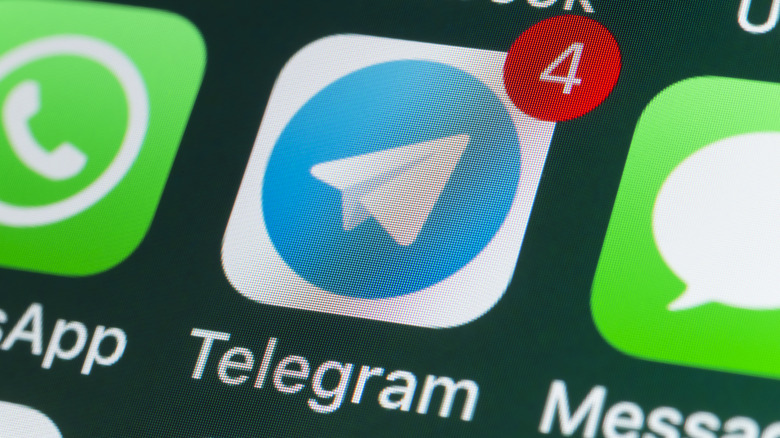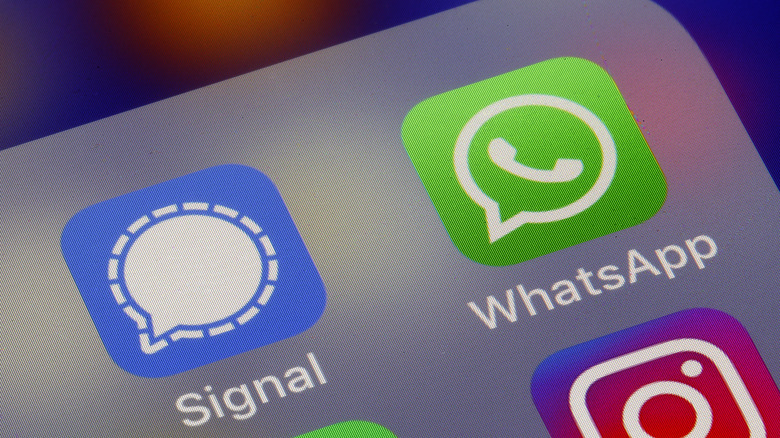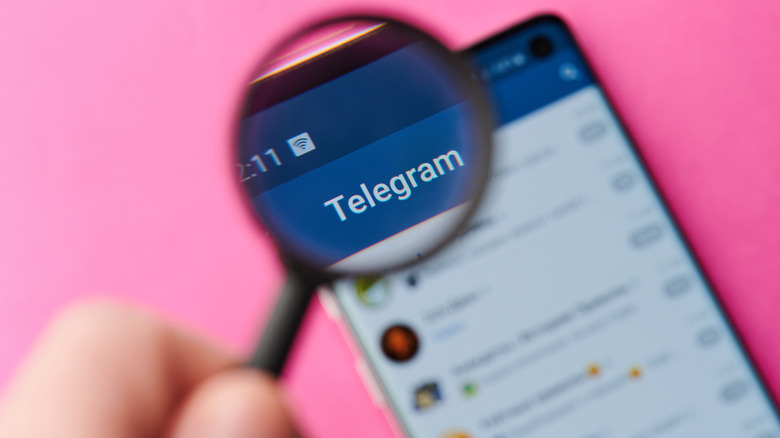What Is Telegram: The Messenger App Explained
Depending on exactly how broad your friend circle is, you may have any number of apps on your phone that include private messaging functionality that you use as the primary way to talk to a given person. At a minimum, there are email, text messaging, and social media apps. And if you're particularly privacy-conscious, then there are also various apps that secure your conversations with end-to-end encryption to make sure nobody is snooping. WhatsApp is promoted the most to the average person, while Signal is popular with journalists for being open-source with plenty of customization options. Facebook Messenger, meanwhile, has a "secret conversation" feature if you want an end-to-end encrypted chat within an existing ecosystem, as does Telegram with "secret chats." (If you don't opt-in, Telegram chats are only encrypted client-to-server.)
Telegram has two big differentiators that distinguish it from its competitors:
- Unlike Signal and WhatsApp, you don't need to give out your phone number for people to be able to message you, which can be useful for journalists, for example.
- Telegram has a social component, called Channels, which the company's website calls "a tool for broadcasting public messages to large audiences."
In practice, Telegram Channels have made the service infamous, as its more lax moderation than traditional social media platforms has made it a haven for extremists and misinformation. That doesn't make Telegram inherently bad, but it does mean that it's worth knowing what you're getting into before using it.
What is Telegram?
Telegram was first launched as a completely free, cross-platform messaging service in 2013 by Nikolai and Pavel Durov, a pair of brothers who were best known for launching the Russian social media platform VK. (They fled Russia in 2014 after VK was taken over by the Kremlin.) Even though Telegram's best privacy feature, end-to-end encryption, is not turned on by default, user privacy on an open platform was the Durovs' focus from the beginning. In particular, they were inspired by the then-recent revelations about government spying from NSA contractor turned whistleblower Edward Snowden.
"It made a lot of people really scared and concerned about the current situation," Pavel told TechCrunch in October 2013. "We are certainly among many, many people who started to think about ways to fix the problem."
Pavel added that he was acutely aware of how much trust in communications companies had been lost in 2013, so Telegram needed to earn it from potential users, with the platform's open API being the first step. "[We] will be able to invite everyone to review the messaging algorithm that we use on Telegram and inspect the source code of the app," he said. "We can earn trust from them, that end-to-end encryption is something that can be done on the client side. This way, any interested person can check that the app does exactly what it claims to and doesn't send information to other sources or does anything else that is insecure."
But what started as a secure messaging app turned into something more in August 2014, when Telegram introduced "broadcast lists," which morphed into "Channels" a year later. This turned Telegram into, effectively, an inverse of the likes of Facebook, Twitter, and Instagram: A messaging platform with a public social element added on instead of a social media platform that also included direct messaging.
How does Telegram work?
Telegram is available on all major desktop/notebook and mobile operating systems, and, for the most part, works like any other major messaging app. However, as noted earlier, if you intend to use it for its encryption-based privacy benefits, then, like on Facebook, every conversation you have in the app needs to be started as a "secret chat" instead of a regular one by selecting that option from the "More" menu on your friend's profile. If you're used to Signal or WhatsApp, this could take some getting used to, but it's as safe as any other end-to-end encrypted chat. It's just that's not the default on Telegram like it is on those platforms.
As for Channels, if you want to start one, it's an option available from the new message menu. From there, you have to decide if the channel is public (anyone can find it) or private (requires an invitation link). If you're not interested in starting your own channel but want to browse what's out there, the app's search function will help find relevant content.
Aside from end-to-end encryption not being turned on by default in a theoretically privacy-first app, this is all pretty straightforward.
Telegram benefits
Compared to other privacy-first messaging apps like Signal and WhatsApp, Telegram's biggest advantage is that you don't need someone's phone number to be able to message them, though the same can be said for Facebook Messenger's "secret conversations." This is particularly useful for anyone who tries to keep their number as close to the vest as possible for spam and other privacy concerns.
Telegram does require a phone number to sign up, but all that's needed to message you is your username. Also, unlike Signal and WhatsApp, Telegram allows signing up without a SIM card using phone numbers purchased from Fragment, so using the service without even the platform knowing your number is possible.
Otherwise, as long as you know that you need to opt in each conversation to use end-to-end encryption, Telegram's main functionality isn't much different from that of its competitors at all.
Telegram negatives
Telegram's biggest flaw for the average user is that despite the app's privacy-first branding, users have to proactively choose "secret chat" to get the level of encryption that's baked in by default in Signal and WhatsApp. If you don't, then while there's some encryption in play, the default chats are not end-to-end encrypted. Instead, they use cloud-based encryption since the messages are stored on Telegram's servers to allow syncing across all of a user's devices. This makes them convenient, but potentially more vulnerable.
Then there's misinformation and other extremist political content that has run rampant in Telegram Channels, particularly the kinds that have a hard time gaining traction on mainstream social media platforms. This first became an issue early in Channels' life in 2015, when Telegram had to get rid of 78 different ISIS channels, but it's continued to be an issue ever since.
"In the past 24 hours alone, we have blocked dozens of public channels that contained calls to violence, and continue monitoring the situation closely," Telegram spokesman Mike Ravdonikas told Politico in light of widespread calls for violence on the platform in the immediate aftermath of the January 6, 2021 attack on the U.S. Capitol. "Our terms of service expressly forbid public calls to violence."
Regardless, not much has changed since then, with Charlie Warzel likely putting it best in a June 2023 story at The Atlantic. "Because the app is free to download, lightweight, and marketed as privacy-forward and anti-censorship, it attracts people looking to fly under the radar," he wrote. "It's a theater of war, a clandestine marketplace, and a safe haven for the de-platformed to build their alternative realities, which makes Telegram an excellent fit for the turbulence of the 2020s and perhaps the most important app in the world today."




